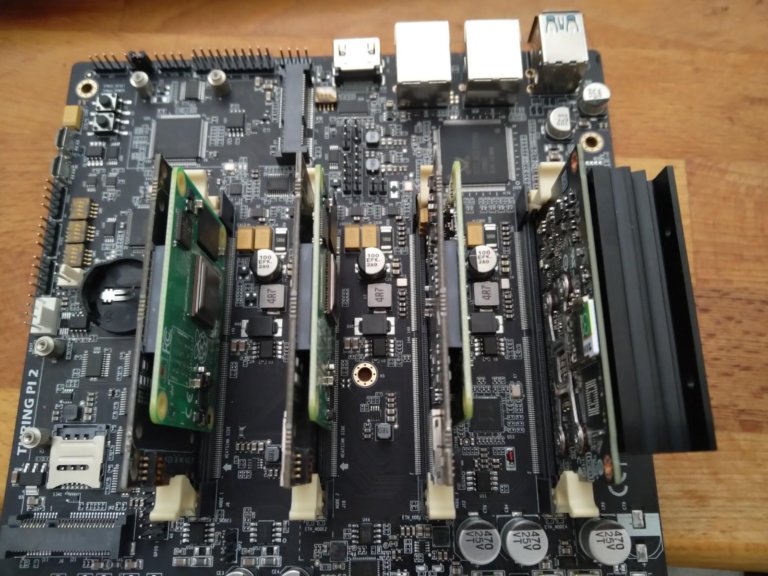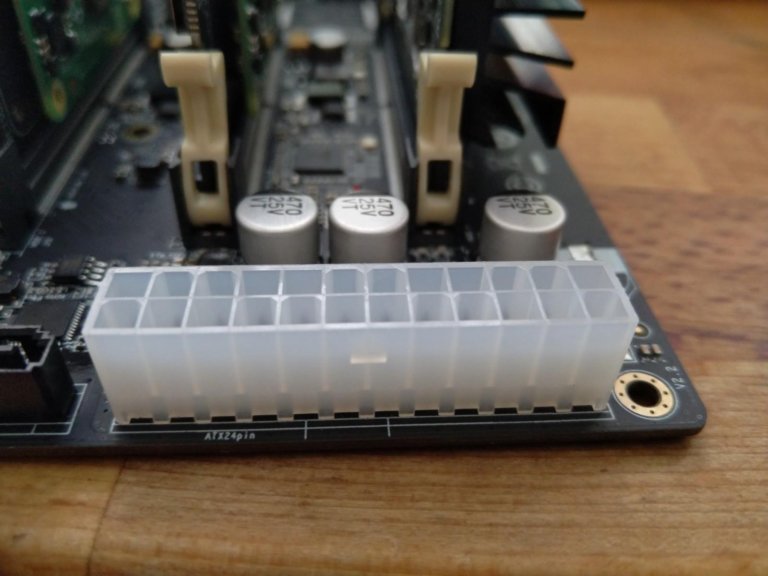Quick Look: Turing Pi 2 is coming to town!
What’s a turing pi?
A Turing Pi is a pcb which can hold instead of just one Compute Module multiple modules. It’s a cluster board. Additionally there’s a cluster management bus which can be used to control the cluster via an i2c bus. For easier management I’ve written a small Golang binary – I cannot remember bus addresses by heart. Have a look at https://github.com/ui-kreinhard/go-turing-i2c-cmdline
I think it doesn’t make sense to copy/paste the offical turing pi website. Have a look at https://turingpi.com/v1/
First look
My overall impression: Beautiful and lot’s of new features. Currently this board is populated with 3 CM4 modules and one nvidia jetson.


Phew – no mini hdmi port like on the Rpi4 🙂 Dual ethernet is really cool!
One thing I’ve noticed first was the atx 24 pin power supply connector. This is interesting – I’m not sure why the switch from barrel connector. Maybe this makes it easier when different voltages are needed. And an ATX power supply is off the shelve hardware.

The carrier board for the compute modules are also very nice and includes the SD card slot. That makes a lot of sense to move it to the carrier board.


Turing Pi 2 vs Turing Pi 1
The guys at Turing Pi added a lot of new cool hardware features. Let’s look at my personal highlights or differences:
- SATA Ports
- 4 Slots for Modules – instead of 7
- VLAN Switch Support
- Dual Ethernet
- M2 Support
- SIM Card Slot
- Nvidia Jetson compability
- Support for CM4 Modules
- Better control of your cluster nodes – You can use tpictl for flashing, acquiring a serial port and power management
The last one is a big desired feature for us. We are currently using the cluster board as part of our CI Pipeline for testing our ansible scripts and some basic system tests before we apply them to the Rpis in the field. We do not have easy physical access to the devices in the field. The max travel time is about 4h. Have a look at my old blog post for more details https://synyx.de/blog/turing-pi-gitlab-ci-ansible/.
What brings the future?
We’re going to integrate the turing pi 2 as part of our ci pipeline and use it primarily for testing the compatibility with Pi4. Currently 95% of our Pis in the field are Pi3B+ but this will change in the next time. We’ll summarize the experience in another short blogpost
Another use case we would like to investigate is using the nvidia jetson with a turing pi2 board for some ocr applications(e.g. license plate, extraction of numbers from trucks) onsite and provide with the other modules more redundancy. The sim slot and two ethernet port will provide some additional redundancy onsite from the networking side.
Thanks to turing pi we are prepared for the hardware change and a very big thanks for the board!